Hotel Room Layout Guide: Create Rooms Guests Will Love
A well-planned hotel room layout makes all the difference for guest satisfaction. In this guide, we’ll look at common hotel room sizes, room types, and layouts, plus tips for tailoring spaces to different kinds of guests.
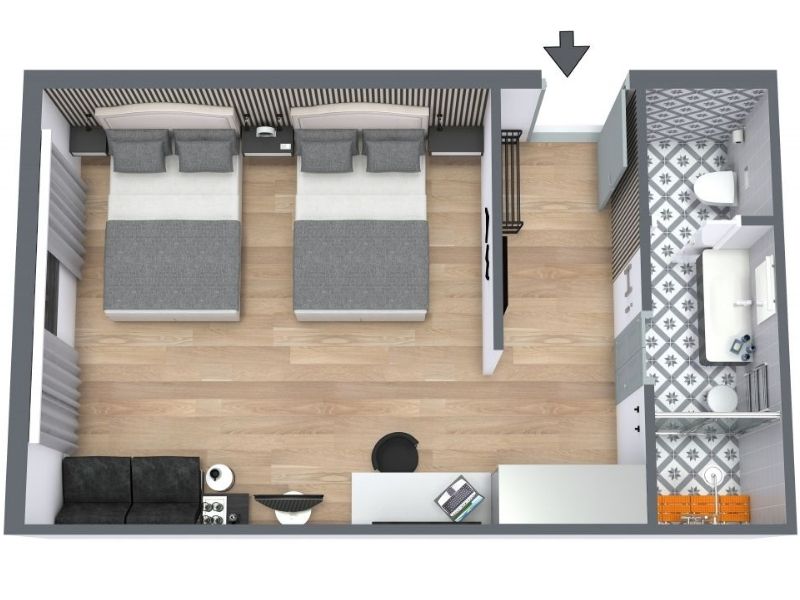
A well-planned hotel guest room has a significant effect on customer satisfaction during a stay.
How you arrange the typical room elements makes a big difference in whether your guests have a pleasant visit or find the room crowded or awkward.
The room layout has become so important that some hotels now post their floor plans for potential guests to review prior to booking.
In general, a hotel room floor plan looks to create comfort, convenience, and a home-away-from-home feel.
While all guests will appreciate a good-quality bed, well-placed lighting, and a location to store clothing, there's more to a good layout than that.
To take your hotel room floor plan to the next level, we've gathered some top tips on how to create a hotel room layout that guests will love.
Understanding Guest Needs
When planning a hotel layout or floor plan, think about your typical guest and what they need:
- Business travelers
Prefer a king or queen bed, a work area with convenient power outlets, good lighting, and a full-length mirror. - Leisure travelers
Needs vary by location and activity. For example, a beach or lake vacation calls for extra hooks and an entry organizer for sandy gear, while a mountain trip benefits from storage for ski equipment, hiking boots, and other bulky items. - Couple-oriented guests
Often prefer a king bed and a more luxurious bathroom. - Family-oriented guests
Need flexible sleeping options, such as two queen beds, a pullout couch, or day beds. A dining table works well for games and meals, and extra storage helps with luggage, strollers, and playpens.
Room Types and Sizes
There’s no official standard for hotel room sizes. They vary by country, city, and whether the hotel is budget or luxury. Rooms in dense city centers are often smaller than those in the suburbs. On average, hotel rooms in Europe are smaller than those in the United States.
In the US, the average hotel room and bathroom together measure about 325 sq ft (30 m²), with dimensions around 13 x 25 ft (4 x 7.6 m).
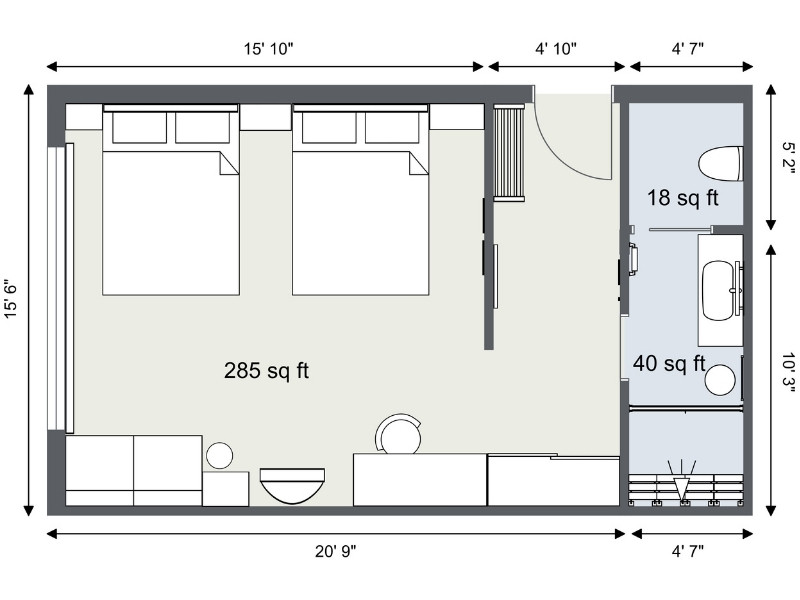
Standard room
Often includes one king bed or two queens/doubles. These rooms are the most common and typically the smallest option.
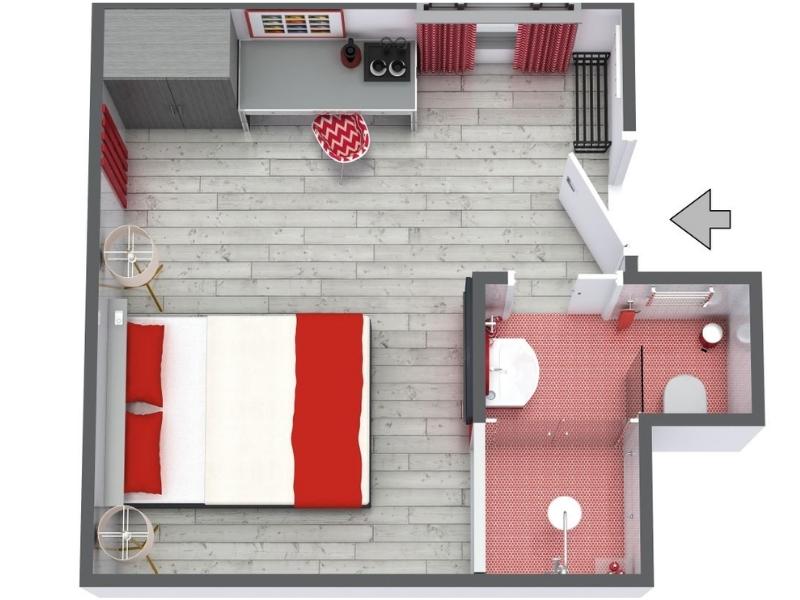
Deluxe room
Has the same bed setup as a standard room but with more square footage. Deluxe rooms may also have better views or a slightly upgraded layout.
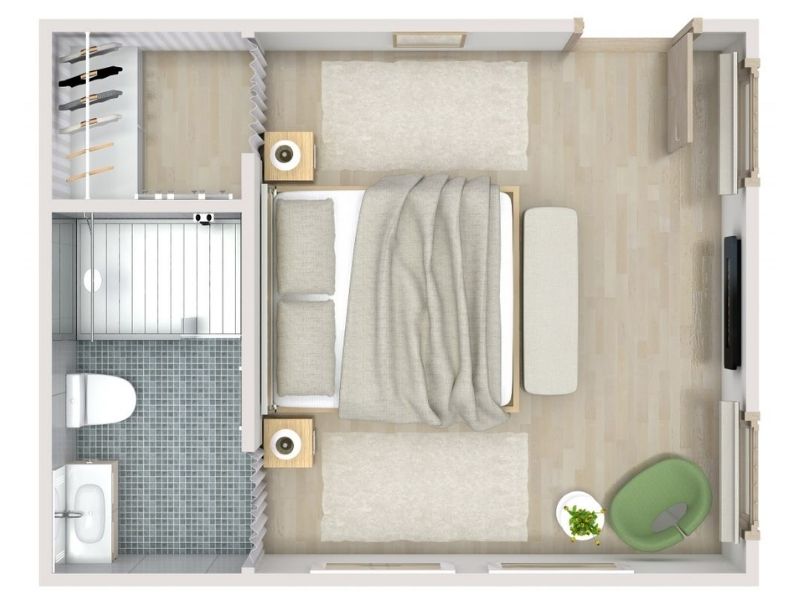
Junior suite
A larger open space that combines a bedroom area with a living area. You might find a sofa, side chair, and coffee table in addition to the bed.
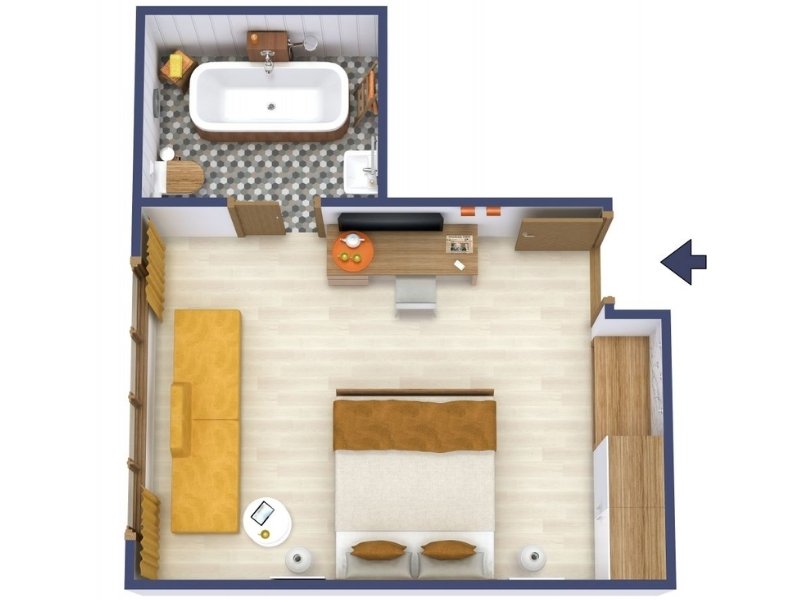
Suite
Includes one or more separate bedrooms connected to a living room. Suites are designed for comfort and privacy, making them a top choice for longer stays or luxury experiences.
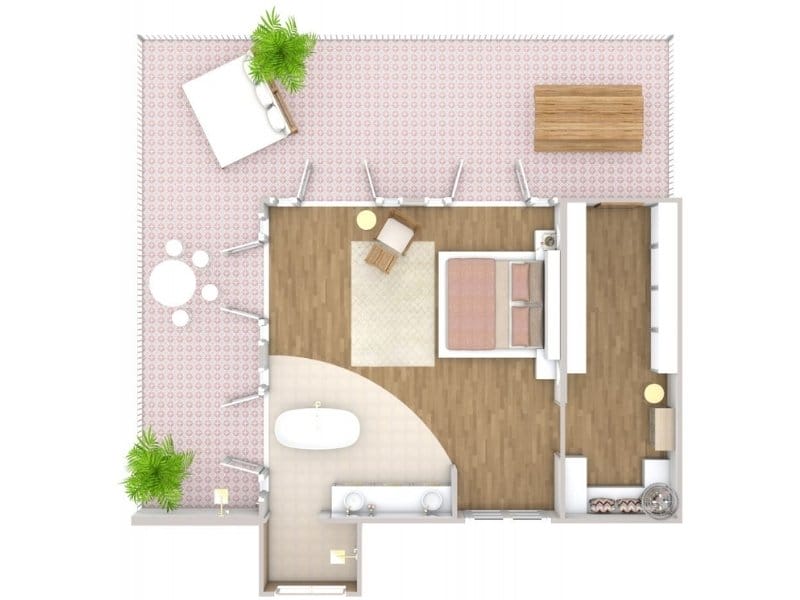
Elements of a Hotel Room Layout
There is a recognizable hotel room layout for a rectangular room. A guest opens the entry door and walks past a bathroom and closet into the main room, which contains a bed on one side and a dresser/TV on the other.
Past the bed are the windows or a balcony. This floor plan works well in a hotel room that is about 12-13 ft (4m) wide so that there is a reasonable aisle between the foot of the bed and the dresser.
Beyond the standard floor plan above, hotel room layout possibilities are virtually endless, depending on your room shape, size, and budget.
As you create or review floor plans, it's a good idea to keep these regular activities and elements in mind:
Sleeping
A good quality bed is one of the most important components of a hotel room layout.
After you've placed the bed, it's nice to add a bedside table on each side of the bed for guests to put a water cup, glasses, and reading material.
Room-darkening draperies allow guests to sleep in as long as they like.
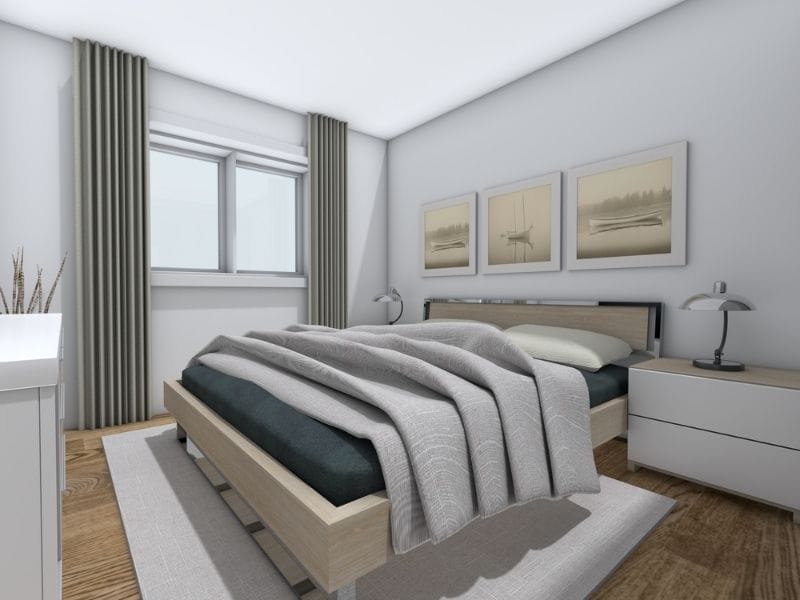
Eating and drinking
Many hotel rooms will include a mini-fridge and a coffee maker. If so, add a small table for a quick meal or coffee. Another option is a larger table that can do double-duty as a desk or an eating area.
Remember to include at least a chair or two. Ottomans are a flexible choice as they can be either a chair, a footrest, or even a bedside table.
Grooming
Many hotels stand out by offering well-designed and even spa-like bathrooms. A vanity sink with a generous counter allows guests to place their makeup bags and other accessories.
If that's not a possibility, consider a shelf above a pedestal sink. Incorporate convenient power plugs for shavers or hair dryers. For the tub or shower, it's helpful to install a shelf for soap, shampoo, and conditioner.
Remember to include several towel bars, racks, or hooks for the inevitable surplus of wet towels. A large vanity mirror with bright lighting is a good idea, as is another full-length mirror near the door.
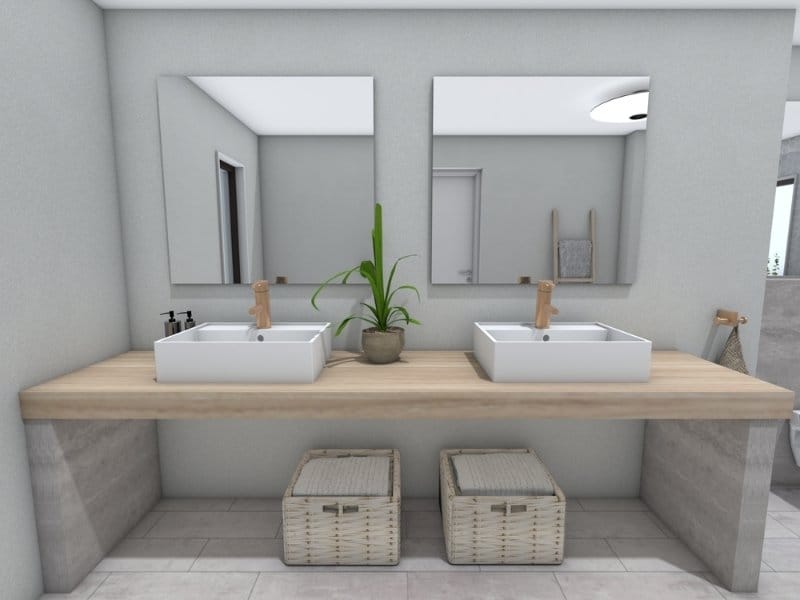
Navigating the space
In an unfamiliar room, lighting is critical. Be sure to install a light switch for guests to use as soon as they enter the room.
Closet lighting is helpful, as is bright bathroom lighting. Finally, bedside lamps are always appreciated so that guests can turn off the final light once they are in bed.
Working/staying connected
A desk is an essential item of furniture to add to the floor plan for the business traveler.
And any guest these days needs plenty of easy-to-access power plugs and charging ports.
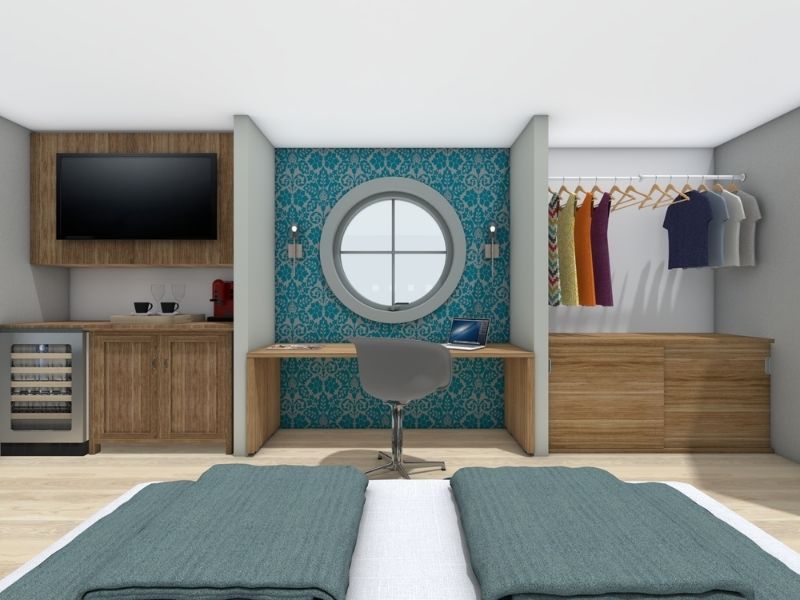
Storage
Nicer hotels will provide one or more luggage racks on which to place suitcases. If you expect guests to unpack for more extended visits, a dresser is practical.
Finally, if space is available, provide a place to store empty luggage - for example, on an upper shelf in a closet.
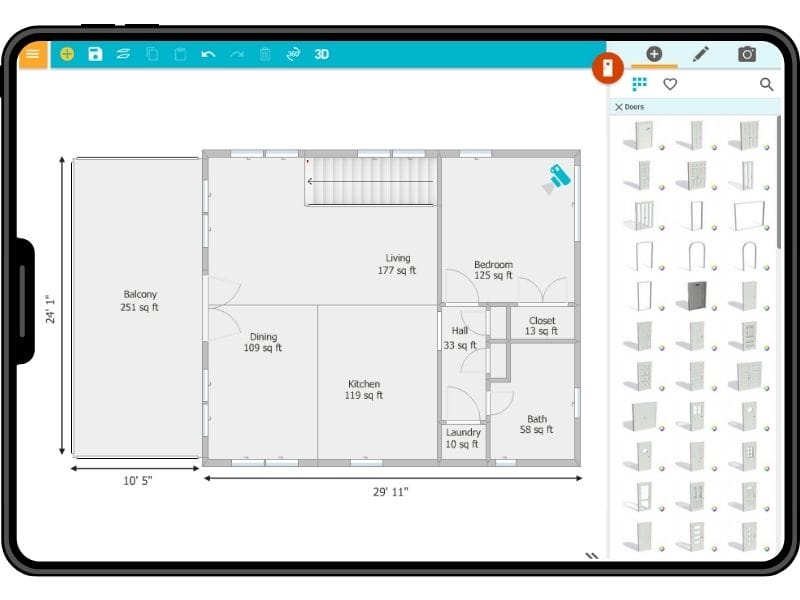
Create a Floor Plan for Your Hotel
All the floor plans and images you’ve seen in this post were created using the RoomSketcher app.
With RoomSketcher, you can easily draw hotel layouts, explore different room types, and generate professional 2D and 3D Floor Plans, plus impressive 3D Photos.
It’s a fast and effective way to plan, present, and share your hotel design.
Related Articles

9 Best Commercial Floor Plan Software Tools
The best way to attract interest, test out different layouts, and communicate design intent is with floor plan software. But which one should you choose? We've made a list of the best options for you.
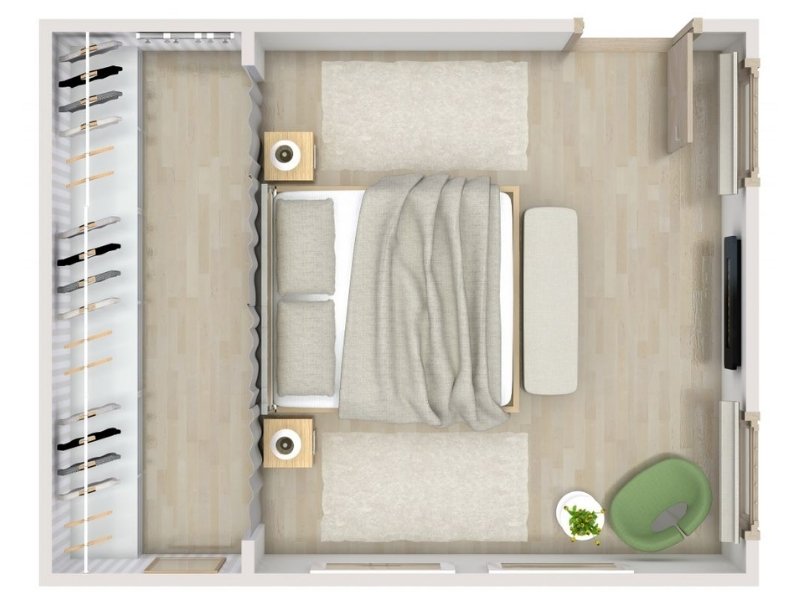
How to Plan the Perfect Primary Bedroom
The primary bedroom is often the largest and nicest bedroom in a house or apartment. The possibilities from there are virtually endless. A luxurious primary bedroom suite may include his and her walk-in closets, a sitting area, a fireplace, and access to the outdoors via either a balcony or a patio.
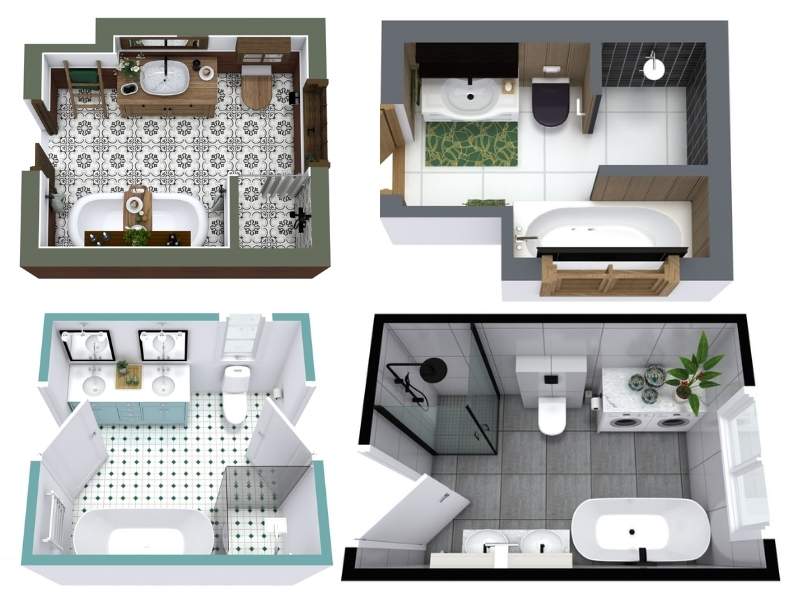
Bathroom Floor Plans: Layouts, Sizes, and Ideas
The design of your bathroom is something that should be carefully planned. After all, a functional and beautiful bathroom can make a big difference in how you start and end your day.
